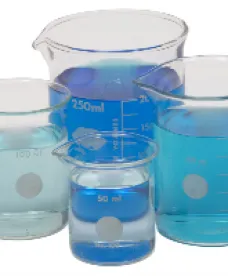EPA last week published a significant new use rule (“SNUR”) under the Toxic Substances Control Act (“TSCA”) that requires prior notification to EPA before a company may newly manufacture (including import) or process certain perfluorinated chemicals historically used in the manufacture and treatment of carpets. 78 Fed. Reg. 62443 (Oct. 22, 2013). These activities will be considered “new uses” and cannot be engaged in until the company first submits a significant new use notice (“SNUN”), which is similar to a pre-manufacture notification (“PMN”) for new chemicals. This SNUR, and similar ones for other chemicals that are still in the proposal stage (e.g., for brominated fire retardants), are part of EPA’s aggressive chemical regulation strategies aimed at a short list of targeted chemicals.
What is important about this SNUR is EPA’s departure from its general policy of exempting “articles” (e.g., products, components, etc.) from the scope of the SNUR. In the thousands of SNURs promulgated by EPA over the past decades, the focus has been on the chemical itself, not the “articles” that contained the chemical. Therefore, the manufacturing, importing or processing of articles containing the regulated chemical were typically not considered “new uses” that would trigger the SNUR’s requirements. However, this new SNUR not only applies to the perfluorinated chemicals, but also to the carpets or carpet pieces that may contain the chemicals. Thus, for example, a company cannot newly import carpet containing the perfluorinated chemicals unless it has first submitted a SNUN to EPA.
Though this is a significant new development, the applicability of the final rule to articles was not as broad as originally proposed. The proposed SNUR would have applied to the new manufacture, importation or processing of any article containing the targeted chemicals. This raised serious concerns in industry, since it would mean that the SNURs could capture manufacturing, importation and other commercial activities that traditionally have not been subject to the constraints of SNURs. These included the potential impact on domestic and international commerce involving the recycling and reuse of articles that might contain the chemicals subject to the SNUR. EPA’s proposed approach would also have subjected to the SNUR a much broader range of companies than just those who manufacture, import or process the chemicals themselves.
Apparently responding to these comments, EPA limited the applicability of the final SNUR for perfluorinated chemicals to specifically identified articles, namely carpets and carpet pieces, rather than all articles that might contain those chemicals. While this outcome narrows the potential reach of the SNUR, it still breaks new ground. Further, it remains to be seen where EPA will take this issue in future SNURs. For example, EPA has not finalized its proposed SNUR on brominated fire retardants that were historically widely used to treat textiles, furniture and plastics (particularly plastics used in electronics) which would apply to the new manufacture, importation or processing of any “articles” that contained the fire retardants, and we do not know if the Agency intends to narrow its applicability in the final rule.
While this week’s SNUR perhaps signals EPA’s willingness to respond to comments seeking reasonable boundaries for SNURs, it also shows that EPA is aggressively using its existing authority under TSCA to execute its chemical regulatory strategy.



 />i
/>i

